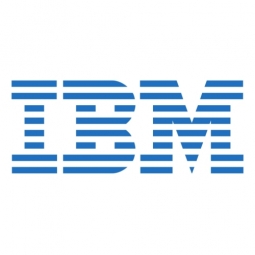地区
- Europe
产品
- IBM i2 National Security and Defense Intelligence
- IBM i2 Analyst’s Notebook Premium
- IBM i2 iBase
- IBM i2 iBase Geographic Information System Interfaces
- IBM i2 Text Chart software
技术栈
- IBM i2 software
实施规模
- Enterprise-wide Deployment
影响指标
- Productivity Improvements
- Digital Expertise
技术
- 应用基础设施与中间件 - 数据交换与集成
适用行业
- 国家安全与国防
适用功能
- 离散制造
- 质量保证
用例
- 预测性维护
- 网络安全
- 实时定位系统 (RTLS)
服务
- 系统集成
- 培训
关于客户
客户是欧洲陆海营,负责收集情报数据以支持现场应急行动。该营由 30 名情报、监视、目标获取和侦察 (ISTAR) 工作人员组成,他们以连续 6 个月的轮换方式每年支持多达五次行动。在被部署支持欧洲防务部队的五次年度行动之一之前,每位工作人员都必须参加一门培训课程,重点关注团队将在现场使用的特定国家安全和国防情报组件。
挑战
欧洲防务部队面临的挑战是如何快速吸收各种类型的数据并利用多个轮换现场小组收集的信息。这些小组需要收集和整合各种类型的情报数据,进行分析和信息利用,以找出差距并向总部报告。随着小组的轮换,该部队需要复制存储在每个小组的情报支持服务器 (ISS) 上的数据并将其分发给所有必要的小组,确保轮换期间不会丢失任何数据,并允许这些小组共享情报。
解决方案
该团队实施了 IBM® i2® 软件,以帮助更好地处理大量复杂情报数据并促进所有单位和总部之间的无缝数据共享。该单位使用 IBM i2 国家安全和国防情报解决方案构建了每个情报支持服务器 (ISS),该解决方案包括 IBM i2 Analyst's Notebook® Premium、IBM i2 iBase、IBM i2 iBase 地理信息系统接口和 IBM i2 Text Chart 软件。这些团队使用 ISS 收集人员、环境、地理空间、军事和犯罪数据,同时满足广泛的要求。IBM 解决方案促进了数据收集以及结果数据的合并以进行分析和信息利用。
运营影响

Case Study missing?
Start adding your own!
Register with your work email and create a new case study profile for your business.
相关案例.

Case Study
Data Capture for Afghanistan Forces
Electronic equipments on the field of Afghanistan provided information on the status of the vehicle and to identify potential threats surrounding it to the British Force. The monitoring and interpretation of this data requires robust and sophisticated digitization for data capture and communication.
Case Study
Enhancing Security and Compliance in Remitly's Global Money Transfer Service with Fastly
Remitly, an online remittance service, was faced with the challenge of securing its proprietary global transfer network. The company needed a security solution that could meet PCI requirements and protect customers' sensitive transactions through its mobile application. The solution had to be capable of defending against new and emerging attack types without impacting performance. Remitly also had to deal with irregular traffic patterns, such as a sudden spike in account transfers from a small network segment on the Pacific coastline of South America. The company needed to determine in real time whether such traffic indicated an attack or valid requests. A traditional web application firewall (WAF) would not be able to distinguish this traffic, potentially leading to customer frustration if the IP was blacklisted.

Case Study
Major Aerospace Company Automates Asset Management
The O&M division of an aerospace and global security company was using spreadsheets to manually track more than 3,000 assets assigned to students and staff. Maintaining audit trails for this high volume of equipment became increasingly time-consuming and challenging. The chore involved knowing precisely what equipment was on hand, what had been issued, its location and the name of the custodial owner of each item. Every aspect of this task was carried owner of each item. Every aspect of this task was carried out by individuals with spreadsheets. Manually documenting the full lifecycle of each asset added to the burden. This included tracking maintenance requirements and records, incidents and damages, repairs, calibrations, depreciation, and end-of-life data.

Case Study
Securing a Large Data Center in the EMEA Region: An IoT Case Study
A leading data-center operator in the EMEA region, with multiple facilities spanning over 25,000 square meters, faced significant security challenges. The operator experienced interruptions in their internal IT network due to unsupervised work of third-party technicians. Despite having a high-end building control system that provided 24x7 monitoring and control to all the building’s infrastructure, the data center was vulnerable from a cyber perspective as it was connected to the IT network infrastructure. The operator launched an urgent OT cyber security project that included both IT-OT network segmentation and OT network asset mapping and anomaly detection. The main objectives were to harden the security of the server systems, secure the facility’s power supply and server cooling system, strengthen the segmentation between building and operational systems, create a visual OT network map, and set up a system for presenting supply-chain attacks that may threaten the data center through equipment vendors’ maintenance activities.

Case Study
Leveraging Graph Technology for Enhanced Cybersecurity: A Case Study on MITRE's CyGraph
MITRE, a federally-funded, not-for-profit company that manages seven national research and development laboratories in the United States, was grappling with the challenge of managing an influx of cybersecurity data. The constant changes in network environments were impacting the security posture of U.S. government agencies. Intrusion alerts, anti-virus warnings, and seemingly benign events like logins, service connections, and file share access were all potentially associated with adversary activity. The cybersecurity researchers at MITRE needed to go beyond rudimentary assessments of security posture and attack response. This required merging isolated data into higher-level knowledge of network-wide attack vulnerabilities and mission readiness. The challenge was not the lack of information, but the ability to assemble disparate pieces of information into an overall analytic picture for situational awareness, optimal courses of action, and maintaining mission readiness. The team also struggled with fully comprehending a given security environment and mapping all known vulnerabilities.

Case Study
Enhancing Security Precision with IoT: A Case Study of Guardsman Group
Guardsman Group, a leading security company in the Caribbean, faced a significant challenge in maintaining the security of its digital infrastructure. The company provides security equipment, personnel, and systems for various businesses across the region. However, one of its offices experienced a security incident that affected all communications at that location. The existing security tools were not sufficient to provide the necessary protection, and it took hours to identify the source of the issue. This incident highlighted the need for a dynamic solution that could proactively identify threats. The company's primary concern was any disruption to its business, as it manages a significant portion of Jamaica's money and cannot afford for its operations to go down.







